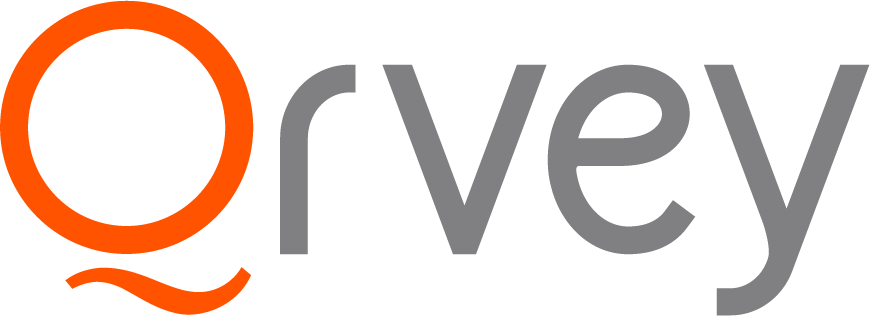Data-driven decision-making isn’t just an advantage—it’s essential for modern SaaS.
But too often, clunky analytics, rigid BI tools, and fragmented data slow users down, forcing them to rely on external solutions just to access the insights they need.
The fix? Embedded dashboards.
By integrating real-time analytics directly into your product, you don’t just deliver insights—you keep users engaged, improve retention, and make data an organic part of their workflow.
More than just a reporting feature, embedded dashboards power multi-tenant analytics—ensuring scalable, customizable insights across different user groups, all within a seamless experience.
And the best part? They do this without draining your development team’s time.
In this guide, we’ll explore what embedded dashboards are, how they work, and how to design them for maximum impact.
What Are Embedded Dashboards?
Embedded dashboards bring real-time analytics inside an application, allowing users to explore data without switching platforms. Unlike traditional BI tools, they create a frictionless analytics experience, keeping users engaged and delivering insights within their workflow.
Businesses rely on embedded dashboards to provide customers with more control over their data, improve decision-making, and increase product engagement.
Whether used for SaaS analytics, enterprise reporting, or white-labeled solutions, embedded dashboards put insights exactly where users need them.
Embedded Dashboards in Action: Real-World SaaS Success Stories
For SaaS companies, embedded dashboards go beyond reporting—they enhance user experience, reduce churn, and create new revenue opportunities. Here’s how they drive impact.
Customer-Facing Analytics
SaaS products that generate valuable data can empower users with self-service dashboard. Instead of static reports, customers get interactive dashboards to track performance, monitor trends, and measure business outcomes—without leaving the app.
Qrvey in Action: JobNimbus
JobNimbus, a CRM and project management platform for contractors, struggled with customer churn due to outdated reporting. By embedding Qrvey’s analytics, they provided customizable dashboards, boosting adoption by 70% among large enterprise users and significantly reducing churn.
Product Usage & Feature Adoption
Embedded analytics help SaaS companies understand how customers engage with their platform, track feature adoption, and optimize the user experience.
Qrvey in Action: Impexium
Impexium, an association management provider, replaced its legacy analytics with Qrvey’s modern, embeddable solution. Users gained self-service capabilities, building their own forms and analytics—leading to deeper insights and improved satisfaction.
Operational Efficiency & Cost Savings
Embedded dashboards streamline internal processes, cutting time and costs.
Qrvey in Action: Global K9 Protection Group
Global K9 Protection Group, a canine security service, integrated Qrvey’s analytics to track key performance metrics. The result? A 60% reduction in operational costs, proving the efficiency and scalability of embedded analytics.
By embedding dashboards directly into their applications, SaaS companies increase engagement, improve retention, and unlock new revenue opportunities.
How Embedded Dashboards Work
Embedded dashboards integrate real-time data visualizations directly into an application, allowing users to access insights within their workflow. These dashboards pull from multiple data sources, process the information, and present it through dynamic charts, tables, and interactive components.
Key Components of Embedded Dashboards:
- Data Connectivity: Connects to cloud databases, data warehouses, and third-party APIs.
- Data Processing: Cleans, transforms, and models raw data for accurate analysis.
- Visualization Layer: Displays insights through dynamic charts, tables, and real-time updates.
- Customization & Interactivity: Enables users to filter, drill down, and tailor their analytics experience.
- Security & Permissions: Controls access so users see only the data relevant to them, ensuring security and scalability.
Embedding analytics within an application enhances user experience, increases engagement, and ensures insights are delivered exactly where they’re needed.
Popular Visualizations in Embeddable Dashboards
Data visualization is central to embedded dashboards, transforming raw data into actionable insights. The right data visual elements help users quickly identify trends, compare metrics, and make informed decisions without leaving the application. Below are the most commonly used visualizations:
Charts and Graphs
Charts and graphs present data in an easy-to-understand format. Common types include:
- Bar charts for comparing categories.
- Line graphs to show trends over time.
- Pie charts for illustrating proportions.
Tables and Pivot Grids
Tables and pivot grids allow users to sort, filter, and drill down into data, making it easier to analyze patterns and uncover deeper insights.
Heatmaps
Heatmaps use color gradients to highlight variations in performance, helping users quickly identify trends and anomalies.
Geospatial Maps
Location-based analytics rely on geospatial maps to visualize regional trends, distributions, and data density.
KPI Cards
KPI (Key Performance Indicator) cards display key business metrics at a glance, ensuring that users can monitor performance in real time.
The right mix of visualizations turns embedded dashboards from static reports into interactive, decision-making tools.
How to Choose the Right Embedded Dashboard Solution
With so many embedded analytics tools available, how do you determine which solution best fits your SaaS product? Whether you’re building customer-facing analytics, internal dashboards, or monetizing analytics as a feature, the right solution should align with your technical requirements, user needs, and growth goals.
Below is a decision-making framework to help you evaluate embedded dashboard solutions:
1. Does the Solution Offer True Multi-Tenant Analytics?
If your SaaS product serves multiple customers, each tenant should only see their own data while maintaining scalability and security.
Look for:
✔ Row-level security to ensure data isolation per tenant.
✔ Customizable user permissions to provide different data views based on roles.
✔ Single sign-on (SSO) and API authentication for flawless security integration.
Qrvey Advantage: Designed for multi-tenant SaaS environments, Qrvey automates user-based data access and tenant management, reducing development overhead.
2. How Well Does It Integrate with Your Existing Tech Stack?
An embedded dashboard should seamlessly connect with your databases, APIs, and cloud infrastructure. Ask yourself:
✔ Does it support your data sources (e.g., Snowflake, Redshift, BigQuery, Postgres)?
✔ Does it provide low-code or no-code options for easy configuration?
✔ Can it handle structured and semi-structured data efficiently?
Qrvey Advantage: Unlike traditional BI tools that require complex ETL processes, Qrvey features a built-in data lake that simplifies ingestion, transformation, and real-time querying.
3. Is It Fully Customizable and White-Labeled?
Your users should never feel like they’ve left your platform. A fully white-labeled solution ensures that analytics:
✔ Matches your brand’s UI, color schemes, and typography.
✔ Blends naturally into your application without third-party branding.
✔ Supports API-based embedding for a native look and feel.
Qrvey Advantage: With complete white-labeling capabilities, Qrvey makes analytics look and feel like an organic part of your SaaS product.
4. What’s the Pricing Model? (User-Based vs. Flat-Rate)
Many embedded BI tools charge per user or per query, which can quickly drive up costs as your customer base grows.
Consider:
✔ Does the pricing scale predictably?
✔ Are you paying for users, data volume, or features?
✔ Can you support unlimited customers without licensing headaches?
Qrvey Advantage: Unlike tools with per-user pricing, Qrvey offers flat-rate pricing, allowing unlimited users, dashboards, and environments without cost spikes.
5. Can It Scale as Your Business Grows?
Your embedded analytics platform should be able to:
✔ Handle growing data loads without performance degradation.
✔ Maintain fast query speeds, even with large datasets.
✔ Support containerized deployment for flexibility across cloud environments.
Qrvey Advantage: Qrvey is built on a containerized architecture that allows SaaS companies to scale analytics infrastructure on demand.
Features to Build into Your Embedded Dashboards
A well-designed embedded dashboard enables users to explore insights, interact with metrics, and make informed decisions. The right features improve usability, enhance decision-making, and create a friction-free experience. Here are key features to include:
- Date Filters
- Let users customize data views by time range—daily, weekly, monthly, or custom periods.
- Help identify trends and compare performance over time.
- Drag-and-Drop Functionality
- Allow users to customize dashboards without technical expertise.
- Make it easier to create tailored reports and visualizations.
- Data Filtering & Drill Downs
- Enable users to filter data and drill down into specific insights.
- Help uncover trends beyond surface-level metrics.
- Role-Based Access Controls
- Restrict data access based on user roles (e.g., executives, analysts, customers).
- Ensure security and relevance, especially in multi-tenant environments.
- Custom Branding & White Labeling
- Let businesses fully customize dashboards with their branding.
- Ensure analytics blend naturally into the product experience.
- Strengthen user trust and reinforce brand identity.
By incorporating these features, businesses can create a powerful, intuitive analytics experience that maximizes usability and engagement.
BONUS: Explore the many ways to offer interactive filters in this step-by-step demo of Qrvey’s Dashboard filters below:
Key Benefits of Embedded Dashboards
Embedded dashboards integrate analytics directly into applications, making data-driven insights more accessible. Instead of switching between platforms, users can explore real-time data where they already work, improving efficiency and engagement.
Improved Customer Satisfaction
When users have access to embedded analytics tailored to their needs, they can quickly find insights without navigating multiple platforms. This leads to higher engagement, greater satisfaction, and stronger customer retention.
Stronger Brand Identity Through White Labeling
A fully white-labeled dashboard ensures a unified platform experience, reinforcing brand identity. When analytics match the application’s UI—colors, fonts, and layouts—it builds user trust and strengthens brand consistency.
Faster, Data-Driven Decision-Making
Real-time analytics replace outdated reports, providing instant access to key metrics. Users no longer have to wait for external tools to process data, enabling faster responses to market changes and business challenges.
Increased Product Engagement & Stickiness
The ability to interact with data directly inside an application keeps users engaged. Features like visualizations, filtering, and drill-down capabilities encourage repeated use, increasing overall platform stickiness.
New Monetization Opportunities
For SaaS businesses, embedded dashboards offer more than just insights—they create new revenue opportunities. Many companies monetize data by offering premium embedded reporting features as an upsell, turning data into a revenue-generating tool.
Embedded BI vs. Embedded Analytics Dashboards
When businesses integrate analytics into their applications, they typically choose between embedded BI and embedded analytics. While both solutions provide valuable insights, they serve distinct purposes and cater to different user needs. Understanding these differences is key to selecting the right approach for your application.
What is Embedded BI?
Embedded BI (Business Intelligence) is designed for structured reporting and historical data analysis. It provides static dashboards, predefined reports, and data exploration tools that enable users to analyze trends and performance over time. This approach is most commonly used for internal analytics, where business users generate reports to track KPIs and past performance.
Best for:
- Organizations that rely on historical data and structured reporting.
- Internal teams that require pre-built reports for operational decision-making.
- Businesses that need to integrate traditional BI tools into their workflow without deep customization.
Key Features:
- Predefined Dashboards & Reports: Generates standardized reports based on past data.
- Ad Hoc Analysis Tools: Supports drag-and-drop reporting for business analysts and data teams.
- Multi-Source Data Integration: Connects to various databases, spreadsheets, and external data warehouses.
Pros:
✔ Strong data visualization and structured reporting capabilities.
✔ Advanced querying tools that allow for in-depth historical analysis.
✔ The best embedded BI software typically integrates with multiple third-party data sources.
Cons:
✘ Often limited in multi-tenant environments, as it lacks flexible user-level security and customization.
✘ Relies on iFrame-based embedding, which can disrupt the user experience.
✘ Requires business users to pull reports manually rather than offering real-time insights.
What is Embedded Analytics?
Unlike embedded BI, which focuses on traditional reporting, embedded analytics integrates dynamic, real-time insights directly into applications. This approach is designed for SaaS companies and businesses offering data-driven experiences to their users. With embedded analytics, customers can interact with data in real time, apply custom filters, and explore insights without leaving the application.
One of the key advantages of embedded analytics is its ability to leverage automated analytics—reducing the need for manual data processing by dynamically generating insights based on user behavior, real-time data streams, and machine learning models. By leveraging real-time data streams, user behavior analysis, and machine learning models, businesses can surface personalized insights at scale.
Best for:
- SaaS platforms that want to provide self-service analytics to their users.
- Businesses that need a fully integrated analytics solution with customizable dashboards.
- Multi-tenant applications that require scalable analytics with granular user permissions.
Key Features:
- Interactive Visualizations: Users can engage with data through dynamic charts, drill-down capabilities, and real-time filtering.
- Real-Time Data Processing: Unlike traditional embedded BI, embedded analytics updates dashboards instantly.
- Deep Integration: An embedded analytics platform can connect to multiple data sources via APIs for a seamless analytics experience.
Pros:
✔ Provides real-time data exploration and self-service analytics.
✔ Fully integrates with applications, avoiding the disruption of external reporting tools.
✔ Supports multi-tenant analytics, allowing businesses to control data access per user or customer.
Cons:
✘ Requires some development effort to integrate directly into applications.
✘ Advanced customization may require an embedded analytics platform with dedicated resources.
Embedded Dashboard Design Considerations
Designing an effective embedded dashboard goes beyond selecting the right charts and graphs. A well-crafted dashboard enhances usability, improves decision-making, and presents data in an intuitive and actionable way. Below are key design principles to consider.
User Experience & Navigation
Users should find insights quickly and efficiently without feeling overwhelmed. Keep dashboards clean, with an intuitive layout that highlights key metrics. Avoid cluttered interfaces and ensure smooth navigation between views.
Customization & Personalization
A well-designed embedded dashboard should let users tailor their experience. Customizable filters, adjustable layouts, and user-specific data views help present the most relevant insights.
Performance & Speed
Slow dashboards frustrate users and lower engagement. Optimize queries, pre-load visualizations, and use caching techniques to maintain fast load times, especially in high-concurrency environments.
Mobile Responsiveness
Users expect analytics to be accessible on any device. Dashboards should adapt seamlessly to different screen sizes, ensuring usability on desktops, tablets, and mobile devices.
Data Security & Compliance
For multi-tenant environments, data security is critical. Implement role-based access controls, row-level security, and encryption to ensure users only see authorized data.
Following these best practices helps businesses create embedded dashboards that drive engagement, deliver real-time insights, and integrate smoothly into applications.
Embedded Dashboard Best Practices
To maximize the value of embedded dashboards, focus on usability, performance, and scalability. Follow these best practices:
- Keep It Simple & Actionable
- Avoid information overload by highlighting key metrics and using clear visualizations.
- Every element should have a clear purpose—users should grasp insights at a glance.
- Prioritize Real-Time Insights
- Ensure dashboards refresh in real time or at frequent intervals.
- Users should always have access to up-to-date data for quick decision-making.
- Offer Customization Without Complexity
- Allow users to filter, drill down, and personalize dashboards easily.
- Drag-and-drop interfaces, dynamic filters, and saved views improve usability.
- Ensure Smooth Integration
- Dashboards should blend naturally with your application’s UI and branding.
- Avoid iFrame-based solutions that disrupt workflow or feel disconnected.
- Optimize for Speed & Scalability
- Use data pre-processing, indexing, and caching to enhance performance.
- Multi-tenant environments should implement row-level security for efficient data access.
- Design for All Devices
- Ensure dashboards are fully responsive across desktops, tablets, and smartphones.
- Maintain usability and functionality on any screen size.
Risks and Challenges of Building Embedded Dashboards
While embedded dashboards offer significant benefits, implementing them comes with challenges that businesses must anticipate and address. Below are key risks to consider when developing an embedded analytics solution.
Complex Integration & Development Overhead
Embedding dashboards directly into an application often requires developer expertise, API management, and infrastructure setup. Businesses must ensure they have the necessary resources to handle authentication, data security, and user permissions effectively.
Scalability & Performance Bottlenecks
As data volumes grow, dashboards must be optimized to handle concurrent users, large datasets, and complex queries. Without proper caching and indexing strategies, performance can suffer, leading to slow load times and frustrated users.
Data Security & Compliance Risks
For multi-tenant applications, confirming that users only access their authorized data is critical. Role-based access control (RBAC), row-level security, and encryption are essential for protecting sensitive information and maintaining compliance with GDPR, SOC2, and other regulations.
User Adoption & Engagement
A well-designed dashboard should be intuitive and require minimal training. If users struggle to navigate or extract insights, engagement will drop. Businesses should invest in user-friendly design, interactive visualizations, and customizable dashboards to enhance adoption.
Cost Considerations
Many analytics solutions charge per user or per query, which can quickly escalate costs. Businesses should explore flat-rate pricing models or solutions that offer unlimited user access to avoid unexpected expenses as usage grows.
By planning for these challenges early, businesses can successfully implement embedded dashboards that scale, remain secure, and provide long-term value.
Make Qrvey Your Embedded Analytics Partner
Whether you want to enhance customer satisfaction, streamline operations, or build a data-driven competitive edge, the right embedded analytics platform makes all the difference.
Qrvey is built for SaaS companies that demand scalability, flexibility, and deep integration. Our fully embeddable, self-service analytics platform enables you to deliver intuitive dashboards, monetize analytics, and accelerate decision-making—without increasing development overhead.
Don’t let outdated reporting hold you back. See how Qrvey can transform your analytics experience.
Book a demo today.

Natan brings over 20 years of experience helping product teams deliver high-performing embedded analytics experiences to their customers. Prior to Qrvey, he led the Client Technical Services and Support organizations at Logi Analytics, where he guided companies through complex analytics integrations. Today, Natan partners closely with Qrvey customers to evolve their analytics roadmaps, identifying enhancements that unlock new value and drive revenue growth.
Popular Posts
Why is Multi-Tenant Analytics So Hard?
BLOG
Creating performant, secure, and scalable multi-tenant analytics requires overcoming steep engineering challenges that stretch the limits of...
How We Define Embedded Analytics
BLOG
Embedded analytics comes in many forms, but at Qrvey we focus exclusively on embedded analytics for SaaS applications. Discover the differences here...
White Labeling Your Analytics for Success
BLOG
When using third party analytics software you want it to blend in seamlessly to your application. Learn more on how and why this is important for user experience.



